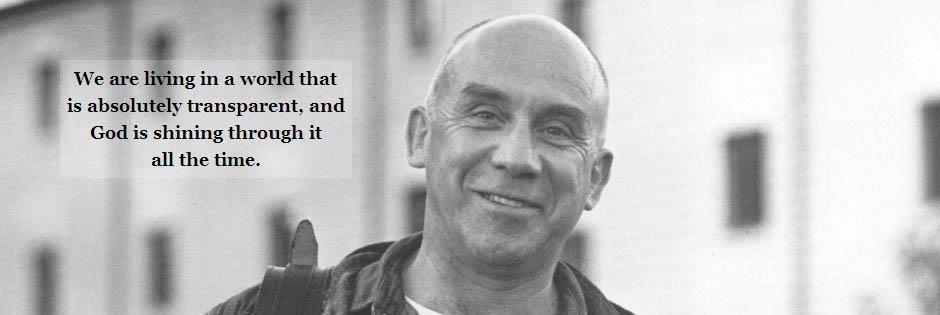Thomas Merton
Peacemaker in a Divided Christendom
by Jim ForestOne of the important contributions Merton made in his lifetime was taking an active role in dialogue with non-Catholic Christians, both Protestant and Orthodox. In our own day this kind of dialogue has become so uncontroversial as hardly to be worth mentioning. It is startling to recall how much mistrust and misunderstanding, even enmity, stood in the way of dialogue just fifty years ago, especially between Protestants and Catholics. Dialogue with Orthodox Christians was less a problem if only because so many people in the West, both Protestant and Catholic, had only the blurriest awareness that the Orthodox Church existed and what it was all about. For them, the Orthodox Church — Eastern Christianity — was truly Terra Incognita.

America’s culture was largely shaped by Protestantism. When immigrants from traditionally Catholic countries began to arrive in great numbers, they found the welcome mat was not out. Even in the mid-20th century, a great many Protestants still tended to regard the Catholic Church, if not necessarily as the Whore of Babylon led by the Anti-Christ, at least as a form of Christianity that in fact wasn’t really Christian. The Catholic Church was a Church of practicing idolaters who sold entrance passes to heaven to whoever could purchase an indulgence. In 1960, when I was in the US Navy and stationed in Washington, DC, I recall being told in all seriousness by the Episcopal family with whom I was then living that there were tunnels connecting Catholic rectories and convents and that the aborted bodies of priest-fathered infants could be found buried in many a convent basement. That same year, with John Kennedy running for the
presidency, Episcopal Bishop James Pike published his views on why a Roman Catholic had no place in the White House. Many who voted against Kennedy were voting to protect the nation from papal influence. The propaganda of the Reformation still flourished. The word “papist” was never a compliment. I once asked my Protestant-raised wife, “What did Protestantism mean to you when you were growing up?” “It meant,”she said, “that we were not Catholics.”
Catholics, of course, had their own deeply felt anti-Protestant bias, partly rooted in bitterness at the anti-Catholic prejudice that was so openly expressed by Protestants. Step inside any Catholic Church in the Fifties and one found a rack in the entrance hall full of booklets on various topics, from basic elements of Catholic religious practice to what Catholics ought never to do. At least one booklet would explain why the sin-avoiding Catholic should never attend services in a Protestant church, even if the occasion was the marriage or funeral of a dear friend.
Things began to change rapidly on both sides of the Protestant-Catholic border following the election of John XXIII as pope in 1958. John was a different sort of pontiff, exuding warmth, affection and respect for others no matter what their religious identity might be. He saw ecumenical dialogue as a significant contribution to a more peaceful world. One of his actions was the establishment in the Vatican of a Secretariat for Christian Unity. When the Second Vatican Council began its work in Rome in 1962, one of its many astonishing aspects was the presence of Protestant and Orthodox observers.
The new climate was felt at Thomas Merton’s monastery in Kentucky well before the Council began. In 1960, via Cardinal Domenico Tardini, the Vatican’s Secretary of State, Pope John XXIII had send word to the abbey of support for the “special retreats with Protestants which Father Louis [Thomas Merton’s monastic name] was organizing at Our Lady of Gethsemani.” Pope John’s approval was amplified by a special gift for Merton: a richly embroidered priestly stole that he himself had worn.
Would that I might have been the proverbial fly on the wall at those early Protestant-Catholic encounters at the Trappist monastery in Kentucky. Those would have been exciting conversations! Merton was the sort of
person able to create a space in which formality would not get the upper hand. Many ideas the abbey’s guests might have brought with them about the Catholic Church must have been dropped into the wastebasket within the first half hour.
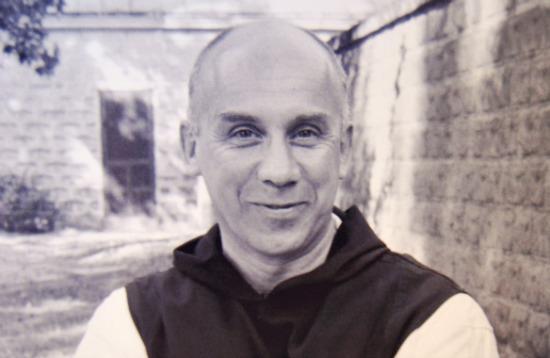
This would have been due in part to Merton’s candor and good humor and the fact that he was not a PR man. He would not have wall-papered over the Catholic Church’s past sins or all that still remained in need of reform. Neither was he out to prove that Protestants were wrong and Catholics were right. He was at least as much a listener as a speaker and had developed a great gift for seeing what was of value in the tradition of the other and for finding common ground. He was, of course, well aware of doctrinal differences and was not dismissive of their significance. Was the bread and wine used for communion nothing more than bread and wine, or was Christ mysteriously present in these elements? Was the interpretation of biblical texts a work of the Church as a whole or something anyone could do? Was the Bible a work of the Church or the Church a work of the Bible? Had Protestantism, in its reaction to corruption in the Catholic Church, overreacted, and as a consequence thrown the baby out with the bath water?
These and many other questions were not unimportant, but without mutual affection and respect, without mutual sympathy, what headway could be made in resolving them? For such a dialogue, no one could have been a better delegate of the monks at Gethsemani and the Church they belonged to than Thomas Merton.
In a passage in Conjectures of a Guilty Bystander, he made the comment: “I will be a better Catholic, not if I can refute every shade of Protestantism,
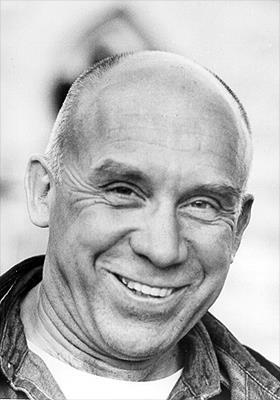
but if I can affirm the truth in it and still go further.” In the same book there is also this passage: “If I affirm myself as a Catholic merely by denying all that is Muslim, Jewish, Protestant, Hindu, Buddhist, etc., in the end I will find that there is not much left for me to affirm as a Catholic: and certainly no breath of the Spirit with which to affirm it.”
Glenn Hinson, a Baptist who in 1960 brought some of his students to the abbey for a meeting with Merton, tells this story: "[Merton] made such a profound impression on me and my students when he talked to us about life in the monastery, and he seemed like such a “real human being,” [that] we couldn’t understand why he would be a monk. In fact, one student asked, “What is a smart fellow like you doing throwing his life away in a place like this?” I waited for Merton to open up his mouth and eat this guy alive. But he didn’t. He grinned that Cheshire cat grin, let love flow out, and said, “I’m here because I believe in prayer. That is my vocation.” You could have knocked me over with a feather. I had never met anyone who believed in prayer enough to think of it as a vocation."
Not many years earlier Merton’s participation in such exchanges would have been hard to imagine. A significant conversion had occurred within him. No one who has read his autobiography, The Seven Storey Mountain, written in his early thirties and published in 1948, would think of calling it an ecumenical book. It is a great book, one of the most engaging autobiographies ever written, but a book with significant weaknesses. On the plus side, it’s a hymn of grateful praise to the Catholic Church, which Merton rejoiced in finding as someone in danger of drowning at sea would rejoice to find a raft. It’s a book that can be compared to a love letter in which the object of one’s love is the most attractive, the most pleasing and
the most virtuous person—not like all those others! The occasional digs at Protestantism, though accurately reflecting Merton’s own experiences, later came to embarrass him and occasionally made him deny, as he no doubt did with some of the abbey’s Protestant guests, that he even knew the author of The Seven Storey Mountain.
The original use of what eventually became Merton’s hermitage was to be a place for dialogue, especially for conversations with Protestants. There had already been a few such encounters at the monastery, but the abbot, Dom James Fox, and Merton could both see the benefits of a special building, however modest, to house such encounters, and there was the added benefit, as obvious to Dom James as it was to Merton, that the building might in time become the hermitage Merton had long been seeking, and in the meantime a place where it would be possible for Merton to write and even stay overnight on occasion. Sometimes called the Mount Olivet Retreat House, sometimes the Mount Olivet Hermitage, plans were made to erect a square cinder-block building with a broad porch running the length of it. A simple structure, lacking both electricity and plumbing, it was built in 1960 and stood about a mile from the main abbey buildings.
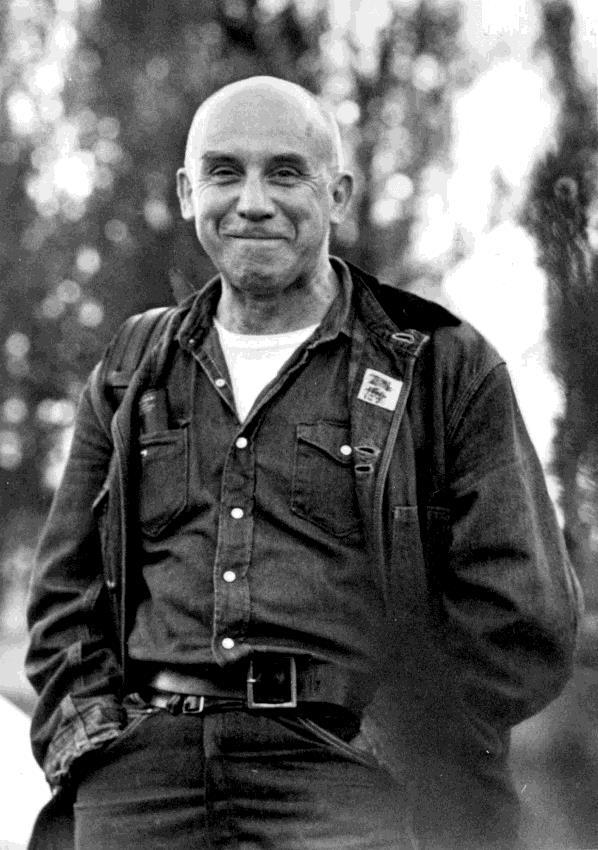
I look forward to doing more research on Merton’s dialogues with Protestants. No doubt it still goes on at the Abbey of Gethsemani, at least in the form of hospitality to Protestant visitors. After all, it is no longer only Catholics who go to monasteries for retreats. Times have changed. The Berlin Wall that once isolated Catholics and Protestants from each other is largely in a state of ruin.
Now let me shift gears and consider Merton’s contribution to ending the Great Schism of 1054. This is something that concerns us all, whatever church we belong to or even if we currently feel no connection with any church. The break in communion between Greek- and Latin-speaking Christians that occurred nearly a thousand years ago had devastating consequences that are still with us. While it was not the first rupture within Christianity, it was by far the most significant and the most enduring. It was the beginning of a millennium-long period of Christian abandonment of Jesus’ prayer that “they may all be one, Father, even as you and I are one.” How many of us take much interest in that prayer or feel challenged by it? Do we not tend to be deeply attached to our differences and more than willing to see them continue? On the occasions when we speak of unity, in fact don’t we tend to mean vague, ghost-like alliances? Meanwhile Christian divisions continue to multiply. How many churches are there now? No one really knows. The number grows day by day.
Among those who cared, and cared passionately, about Jesus’ prayer for unity was Thomas Merton. The seed was planted early, when he was eighteen years old and made a journey to Rome. It wasn’t very long after his father’s death and Merton was still deeply in the shadow of that sad event, which had pulverized what little religious belief he had absorbed in his youth. His initial response to the Eternal City wasn’t enthusiastic. He found much of Rome’s monumentality boring if not irritating. The Rome of the Caesars, he decided, “must have been one of the most revolting and ugly and depressing cities the world has ever seen.” Nor was he impressed with the ecclesiastical monuments of the Renaissance and CounterReformation that he had visited as a dutiful tourist reading his Baedeker guidebook.
But after about a week his visit took a turn. He began to visit Rome’s most ancient churches. One of the first he found was the Church of Saints Cosmas and Damian, named after physician brothers who had refused to take any reward for their healing services and eventually died as martyrs. The sixth century Byzantine mosaic over the altar stopped Merton in his tracks. It’s the one mosaic in Rome he pauses to describe in The Seven Storey Mountain “Christ coming in judgment against a dark blue sky with a
suggestion of fire in the clouds beneath his feet.” Peter and Paul stand to the right and left of Christ, the two martyred brothers at their sides.
The impact of the mosaic on Merton was immense. “What a thing it was,” he wrote, “to come upon the genius of an art full of spiritual vitality and earnestness and power — an art that was tremendously serious and alive and eloquent and urgent in all it had to say. And it was without pretentiousness, without fakery, and had nothing theatrical about it. Its solemnity was made all the more astounding by its simplicity and by the obscurity of the places where it lay hid, and by its subservience to higher ends, architectural, liturgical and spiritual ends which I could not even begin to understand, but which I could not avoid guessing, since the nature of the mosaics themselves and their position and everything about them proclaimed it aloud.”
Merton kept searching and found himself fascinated by the many similar Byzantine mosaics that had survived in other churches. “I began to haunt the churches where they were to be found,” he writes, “and all the other churches that were more or less of the same period. … Without knowing anything about it, I became a pilgrim.”
For anyone with a similar capacity to respond to such iconography, Rome is a pilgrim’s paradise. From the catacombs to all the churches that survive from Christianity’s first millennium, no city has a more complete record of the art that was once an aspect of Christian unity.
If Merton’s reason for seeking out such churches was at first perceived by him as more aesthetic than religious, still the religious aspect could not be ignored. The images that so arrested Merton were windows through which he experienced the gaze of Christ. One of its consequences was that Merton, for the first time in his life, bought a Bible. The next giant step was entering one of Rome oldest churches, Santa Sabina, and getting down on his knees to pray.
In the midst of the description of his search for the iconographic art to be found in Rome’s oldest churches comes one of the most electrifying passages in The Seven Storey Mountain, Merton’s attempt to describe his first awareness of Christ as the person who would give his life its meaning and
center: "And now for the first time in my life I began to find out something of who this Person was that men call Christ. It was obscure, but it was a true knowledge of Him, in some sense truer than I knew and truer than I would admit. But it was in Rome that my conception of Christ was formed. It was there I first saw Him, Whom I now serve as my God and my King, and who owns and rules my life. It is the Christ of the Apocalypse, the Christ of the Martyrs, the Christ of the Fathers. It is the Christ of Saint John, and of Saint Paul, and of Saint Augustine and Saint Jerome and all the Fathers — and the Desert Fathers. It is Christ God, Christ King."
Again and again in his later life, Merton sought to express what it was about icons that continued to touch him so profoundly. In 1958, he wrote a small book, Art and Worship, intended to help the reader better understand and appreciate this earlier form of Christian art, often regarded dismissively as naive and primitive. As far as I know, Art and Worship is the only book Merton prepared for publication that has yet to be published.
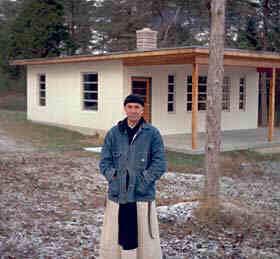
One of the rare items in my Merton library is a set of the page proofs of that book — the project had gotten that far into production before the publisher, Farrar Straus, had second thoughts about issuing it and pulled the plug. The page proofs include the imprimatur of the archbishop of Louisville. Apparently the publisher’s worry was that such a backward-looking book would damage Merton’s reputation.
In the last section of Art and Worship, Merton makes the comment that, while the Renaissance “was an age of great art,” with a flowering of talent, “Christian art tended to a great extent to lose the highly sacred character it had possessed in earlier centuries.” He goes on to note that, while the more ancient tradition of sacred art did not equal the work of the Renaissance in representing the human form, the work of Renaissance artists failed to equal Byzantine iconography in conveying the sacred. The earlier masters, he said, were better able “to convey something of the sacred awe and
reverence, the sense of holiness and of worship, which fill the soul of the believer in the presence of God or … the angels and the saints.”
“It is the task of the iconographer,” Merton wrote, “to open our eyes to the actual presence of the Kingdom in the world, and to remind us that though we see nothing of its splendid liturgy, we are, if we believe in Christ the Redeemer, in fact living and worshiping as ‘fellow citizens of the angels and saints, built upon the chief cornerstone with Christ’.”
Merton was never weaned from his love of this art form. Occasionally he returned to the topic of icons in letters. Only months before his death, he corresponded about icons with a Quaker friend, June Yungblut, in Atlanta. He confessed to her that books such as her husband was then writing, which presented Jesus as one of history’s many prophetic figures, left him cold. He was, he told her, “hung up in a very traditional Christology.” He had no interest, he wrote, in a Christ who was merely a great teacher who possessed “a little flash of the light.” His Christ, he declared, was “the Christ of the Byzantine icons.”
I don’t have a copy of her reply, but I can guess, based on Merton’s response to it, that June was put off by the phrase “the Christ of the Byzantine icons.” In our culture, the word “Byzantine” is rarely if ever used in a complimentary sense. Doesn’t “Byzantine” signify the worst both in Christianity and culture? And as for icons, weren’t they of about as much artistic significance as pictures on cereal boxes?
In a letter sent in March 1968, Merton explained to June what he meant by his phrase, the “Christ of the Byzantine icons.” The whole tradition of iconography, he said, "represents a traditional experience formulated in a theology of light, the icon being a kind of sacramental medium for the illumination and awareness of the glory of Christ within us. … What one ’sees’ in prayer before an icon is not an external representation of a historical person, but an interior presence in light, which is the glory of the transfigured Christ, the experience of which is transmitted in faith from generation to generation by those who have “seen,” from the Apostles on down. … So when I say that my Christ is the Christ of the icons, I mean that he is reached not through any scientific study but through direct faith and the mediation of the liturgy, art, worship, prayer, theology of light,
etc., that is all bound up with the Russian and Greek tradition." Even among Orthodox writers, one rarely finds a more insightful yet so succinct a presentation of the theology of icons.
What Merton had learned about icons was enriched by the gift from his Greek friend, Marco Pallis, of a hand-painted icon made by a monk on Mount Athos. It had arrived in the late summer of 1965, just as Merton was beginning his hard apprenticeship as a hermit. Pallis’ gift was one of the most commonly painted of all icons, an image of the Mother of God and the Christ Child. For Merton this gift was a kiss from God. He wrote to Pallis in response: "How shall I begin? I have never received such a precious and magnificent gift from anyone in my life. I have no words to express how deeply moved I was to come face to face with this sacred and beautiful presence granted to me…. At first I could hardly believe it…. It is a perfect act of timeless worship. I never tire of gazing at it. There is a spiritual presence and reality about it, a true spiritual ‘Thaboric’ light, which seems unaccountably to proceed from the Heart of the Virgin and Child as if they had One heart, and which goes out to the whole universe. It is unutterably splendid. And silent. It imposes a silence on the whole hermitage. … [This] icon of the Holy Mother came as a messenger at a precise moment when a message was needed, and her presence before me has been an incalculable aid in resolving a difficult problem."
We come upon a final clue to the importance icons had in Merton’s inner life when we consider the short list of personal effects that were returned with his body when it was flown back to the monastery from Thailand in December 1968:
1 Timex Watch
1 Pair Dark Glasses in Tortoise Frames
1 Cistercian Leather Bound Breviary
1 Rosary
1 Small Icon on Wood of Virgin and Child
Now one might ask what Merton’s appreciation of icons and Byzantine Christian art has to do with Christian unity? The answer is that, for many people, unity may more easily begin with the eyes and heart than with the mind. As we see in Merton’s case, the later development of his Christian
life and his understanding of authentic Christianity began, not by academic research or attending lectures or hearing sermons, but with a wordless experience of Christ that was mediated by icons.
One thing leads to another. In time Merton’s love of icons helped open the way for his growing interest in the Church that produced such compelling Christian imagery. I sometimes wonder if we ever would have heard of Merton had it not been for that stay in Rome when he was eighteen and the impact on him of mosaics he found there? Would he have later become a Christian, Catholic or otherwise? Would he have become a monk who wrote books?
It seems not unlikely that the earlier shaping of his faith by iconography was a factor in his later attraction to the writings of the great theologians of the Church’s first millennium, the Church Fathers, which in turn eventually opened the way for his close reading of a number of twentieth century Orthodox theologians, such writers as Paul Evdokimov, Olivier Clément, Alexander Schmemann and Vladimir Lossky. While in the hermitage’s small chapel there were eventually seven icons that had made their way to Merton, in his hermitage library, there were such titles as Early Fathers from the Philokalia, Writings from the Philokalia on the Prayer of the Heart, Treasury of Russian Spirituality, and Manual of Eastern Orthodox Prayers. In the last book there is a slip of paper on which Merton had copied the Jesus Prayer in Slavonic along with a phonetic interlinear transliteration.
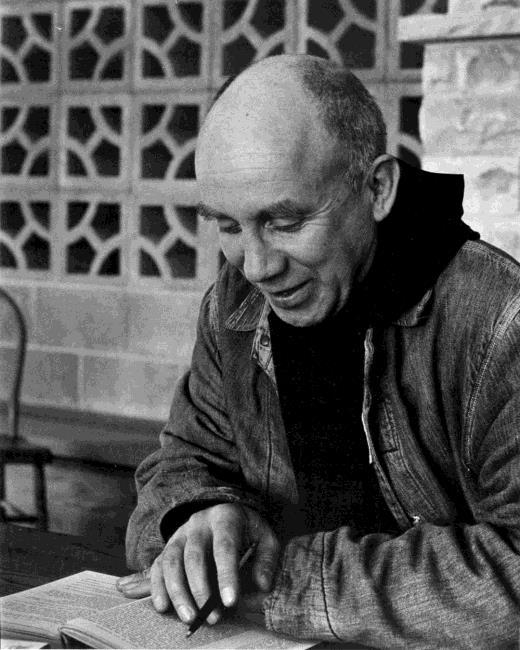
The Philokalia, which I would guess not many people in this room have read or even heard of, was important to Merton. It is a substantial anthology of Orthodox writings that mainly has to do with the Jesus Prayer, or the Prayer of the Heart. In fact, on the back of the icon he had with him on his final journey, Merton had written in Greek a short passage he had discovered in the Philokalia: "If we wish to please the true God and to be
friends with the most blessed of friendships, let us present our spirit naked to God. Let us not draw into it anything of this present world — no art, no thought, no reasoning, no self-justification — even though we should possess all the wisdom of this world."
Merton’s attentive reading from Orthodox sources went on for years. In one of the books published late in his life, Conjectures of a Guilty Bystander, there is an important passage on this theme that was based on a journal entry Merton had made on April 28, 1957, not long before he began writing Art and Worship. Here is that passage in its finished form:
"If I can unite in myself the thought and devotion of Eastern and Western Christendom, the Greek and the Latin Fathers, the Russian and the Spanish mystics, I can prepare in myself the reunion of divided Christians. From that secret and unspoken unity in myself can eventually come a visible and manifest unity of all Christians. If we want to bring together what is divided, we cannot do so by imposing one division upon the other. If we do this, the union is not Christian. It is political and doomed to further conflict. We must contain all the divided worlds in ourselves and transcend them in Christ."
Merton’s search for unity, his attempt to live within himself the unity he sought for the Church as a whole, should be regarded, not as something controversial, but as a normal Christian discipline. Christianity’s east-west division is a thousand-year-old scandal. It is a living refutation of the words St. Paul in his letter to the Ephesians. We who wish to follow Christ, he said, are called “to maintain unity of spirit in the bond of peace” (Ephesians 4:3).
Merton spent the last decade of his life seeking to maintain unity of spirit in the bond of peace and seeking it not simply within himself, but also as a shared unity of spirit in pilgrimage with others.
Merton rejoiced in reading the sayings and stories of the Desert Fathers, the monks of the early Church who were pioneers of the monastic life. For Merton these original monks living in the wastelands of Egypt and Palestine were not only a personal inspiration, as well as a challenge to modern monasticism, but a challenge to all followers of Christ. One of the
stories he translated and included in The Wisdom of the Desert gives witness to how difficult it ought to be for the followers of Christ to contend with each other:
"There were two old men who dwelt together for many years and who never quarreled. Then one said to the other: “Let us pick a quarrel with each other like other men do. “I do not know how quarrels arise,” answered his companion. So the other said to him: “Look, I will put a brick down here between us and I will say “This is mine.” Then you can say “No it is not, it is mine.” Then we will be able to have a quarrel.” So they placed the brick between them and the first one said: “This is mine.” His companion answered him: “This is not so, for it is mine.” To this, the first one said: “If it is so and the brick is yours, then take it and go your way.” And so they were not able to have a quarrel."
Merton’s search for the recovery of the undivided Church was not to an escape from tradition but a means to purify traditions which have over time been distorted or calcified or become meaningless. As Merton put it in a text entitled Monastic Spirituality and the Early Fathers, from the Apostolic Fathers to Evagrius Ponticus:
"If for some reason it were necessary for you to drink a pint of water taken out of the Mississippi River and you could choose where it was to be drawn out of the river would you take a pint from the source of the river in Minnesota or from the estuary in New Orleans? The example is perhaps not perfect. Christian tradition and spirituality does not [necessarily] become polluted with development. That is not the idea at all. Nevertheless, tradition and spirituality are all the more pure and genuine in proportion as they are in contact with the original source and retain the same content." [Thomas Merton: Cassian and the Fathers: Introduction to the Monastic Tradition, Cistercian Publications, 2005, p 5]
Certainly the Christians of the early centuries, standing as they did at the Minnesota rather than New Orleans end of the river, provide an example of the basics of Christian life — a simpler, poorer, less institutional Christian witness. Their hospitality, voluntary poverty, repentance and forgiveness is relevant to each of us, whatever our vocation and no matter
how far from the desert we live, even if we live in New Orleans or Vancouver.
It was in his exploration of the living traditions of the Eastern Church, which to this day is notably less structured and more decentralized, that Merton came upon the Jesus Prayer and began to practice it himself. Would that he had written more about this aspect of his own spiritual practice, but there are things even Merton didn’t put on paper. However one gets a glimpse of his own use of the Jesus Prayer in a 1959 letter to a correspondent in England, John Harris:
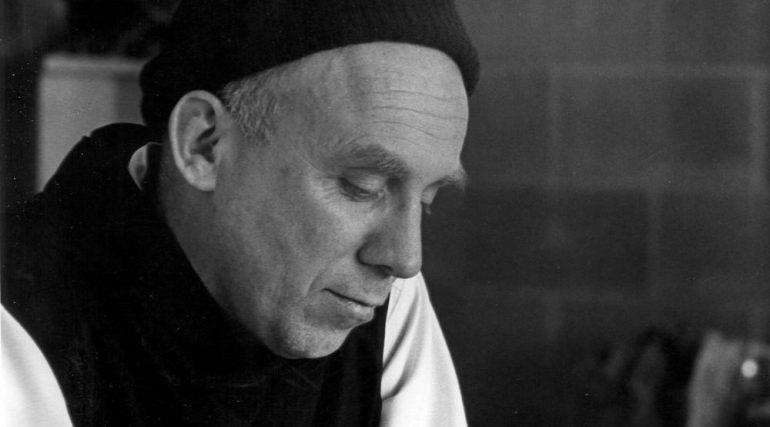
"I heartily recommend, as a form of prayer, the Russian and Greek business where you get off somewhere quiet … breathe quietly and rhythmically with the diaphragm, holding your breath for a bit each time and letting it out easily: and while holding it, saying “in your heart” (aware of the place of your heart, as if the words were spoken in the very center of your being with all the sincerity you can muster): “Lord Jesus Christ Son of God have mercy on me a sinner.” Just keep saying this for a while, of course with faith, and the awareness of the indwelling [Holy Spirit], etc. It is a simple form of prayer, and fundamental, and the breathing part makes it easier to keep your mind on what you are doing. That’s about as far as I go with methods. After that, pray as the Spirit moves you, but of course I would say follow the Mass in a missal unless there is a good reason for doing something else, like floating suspended ten feet above the congregation."
It is not that Merton lacked appreciation for aids to prayer and contemplation that have been so much a part of Catholic Christianity. In the same letter to John Harris, he goes on to recommend the rosary and other forms of devotion to the Mother of God: "I like the rosary, too. Because, though I am not very articulate about her, I am pretty much
wound up in Our Lady, and have some Russian ideas about her too: that she is the most perfect expression of the mystery of the Wisdom of God … [and] in some way … is the Wisdom of God. (See the eighth chapter of Proverbs, for instance, the part about ‘playing before [the Creator] at all times, playing in the world.’) I find a lot of this “Sophianism” in Pasternak … "(The Hidden Ground of Love, p. 392)
Clearly neither Merton nor any of us lives in the undivided Church, certainly not in any visible sense. The shores between East and West in Christianity still remain far apart and in some ways the distances widen, though recent popes have done much good work in building bridges, and there have been bridge-builders on the Eastern side as well, including the current Patriarch of Constantinople, Bartholomew.
Nonetheless Merton helps us see that each of us can participate mystically in a spiritual life that brings us closer to the undivided Church. After all, Christ’s Body is one Body. We can help to heal the divisions in the Church by holding together in our own life those things which are best and by letting the saints of the early Church become our mentors, as they were Merton’s. And perhaps icons can be a help to us, as they were to Merton. Though it happened slowly, Merton played a role in opening my eyes to icons. I find them a great help to prayer and a deeper faith.Merton shows us that this journey toward the recovery of Christian unity is not easy, yet we also see that the efforts of even one monk, done with persistence, have made a difference. Perhaps we might try to follow his example.
